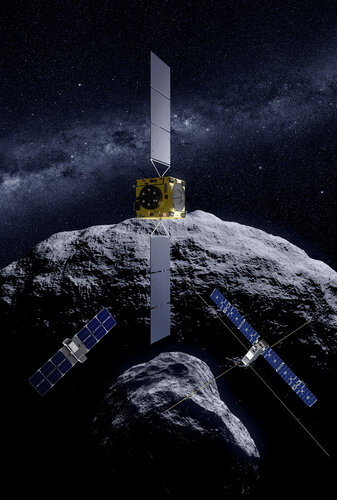
“At the base of each DSD is its Life Support Interface Board, LSIB, which is the connection between Hera and each of the two CubeSats,” explains Tatsuo Shimizu, LSIB project manager and designer at Finland’s Kuva Space. “The LSIB converts signals and power voltage between the two sides, and also performs isolation in the event of any CubeSat failure. Essentially, all of Hera’s interaction with the CubeSats in their DSDs takes place via the LSIBs.”
Tatsuo worked hard through the COVID-19 pandemic to meet the LSIB’s strict deadline, having to spend thousands of euros to phone around component suppliers in response to supply chain disruptions, adapting the LSIB design accordingly.
Maria Hieta, overseeing product assurance for the LSIB at the Finnish Meteorological Institute, FMI, adds: “While Hera is built using traditional space-grade components, following all applicable European Cooperation on Space Standardization, ECSS, standards, miniaturised CubeSats can use lower grade parts and take more risks in the design.



